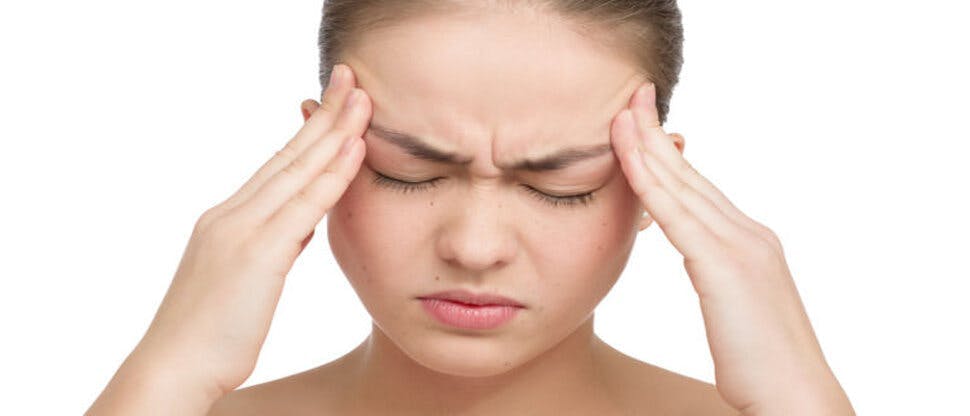Tension-type headache and migraines — signs & symptoms

How do patients present?
Tension-type headache
Tension-type headache (TTH) usually begins during the teenage years, and it tends to affect more women than men.1 TTH is usually described as a pressure or tightness, like a band around the head that may feel as if it’s coming from or radiating to the neck.1
Migraines
Migraines most often tend to start around puberty and usually affects those between the ages of 35–45 years.1 Similar to TTH, it seems to affect more women than men due to its association with hormonal influences.1 Migraines may also present with other symptoms (i.e., nausea).
Signs, symptoms, and “red flags”

Distinguishing between tension-type headache and migraines2-6
| TTH | Migraine |
|
|
Associated with at least 2 of the following:
|
Associated with at least 2 of the following:
|
It is NOT associated with:
|
It should include one of the following:
|
TTH = tension-type headache.

Signs and symptoms associated with phases of migraine
Unlike TTH, there is a recognized pattern for a migraine attack. However, this may not apply to all migraine sufferers.7
Each phase is usually associated with progressive symptoms, as the migraine reaches its peak before subsiding:4,5,7,8
| Phase | Characteristics |
| I – Prodrome or premonitory phase |
|
| II – Aura phase |
|
| III – Attack or headache phase |
|
| IV – Postdrome or resolution phase |
|
TTH = tension-type headache.

“Red-flag” symptoms
Though common, TTH and migraines are not the only causes of headaches. Sometimes, patients could present with symptoms or a history that should be considered for urgent referral to either a doctor or a specialist.4
These “red-flag” symptoms include:4,9
| “Red-flag” symptoms |
| A severe and abrupt onset of headache |
| Headaches that have suddenly “appeared” in middle-age or older (>50 years old) |
| Problems associated with the nervous system such as a stiff neck, focal signs (drooping face, paralysis on one side of the body, and slurred speech) suggestive of a stroke, and reduced consciousness |
| Headache with signs of systemic illness (e.g., fever, rash) |
| Significant changes in the pattern of headaches experienced (e.g., increased frequency or worsening severity) |
| Severe headaches at night or when waking up in the morning (could be something other than migraines) |
| Headache onset with strenuous physical activity (e.g., exercise) |
Understanding headaches and migraine
Headaches & migraine overview
Find out more about how headaches and migraines can impact people’s lives.

Learn about the causes and triggers
Discover some of the causes and triggers for the more common types of primary headache disorders — tension-type headache and migraines.1
What can you recommend to your patients for pain relief from their headaches?
Find out more about pharmacological and non-pharmacological treatments for tension-type headache and migraines.
Learn more

Advil Extra Strength Liqui-Gels
An over-the-counter analgesic containing 400 mg ibuprofen that relieves mild to moderate migraine headaches including associated symptoms of nausea, and sensitivity to light and sound.10

Advil Liqui-Gels
An over-the counter analgesic containing 200 mg ibuprofen that helps your patients manage their headache pain including tension headache.10